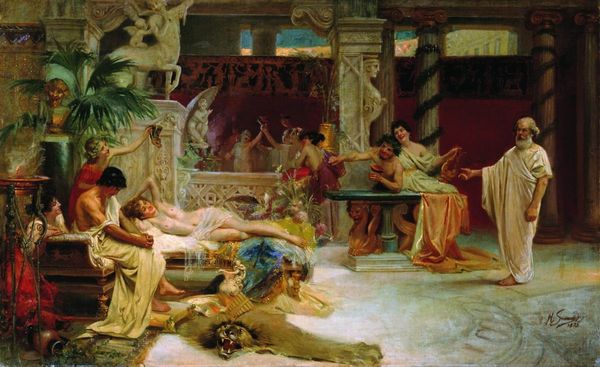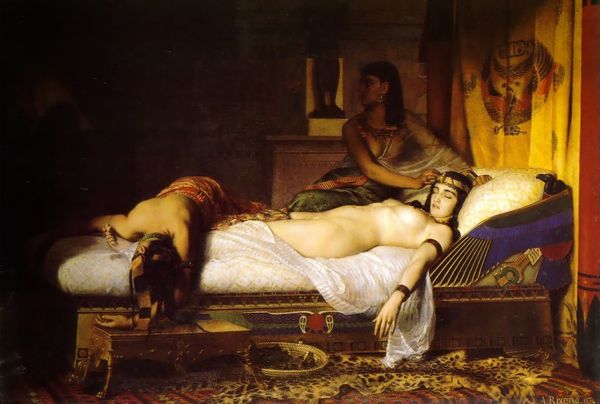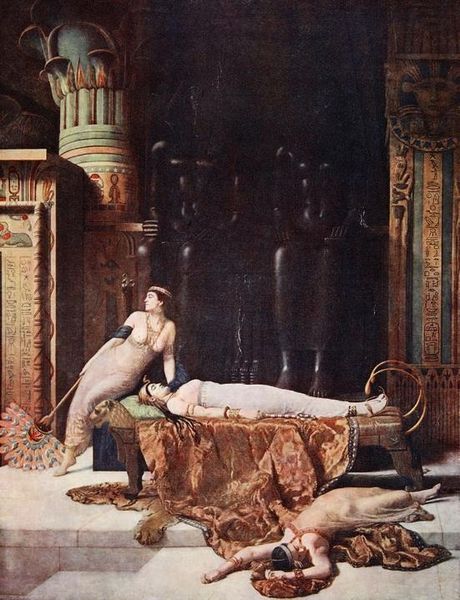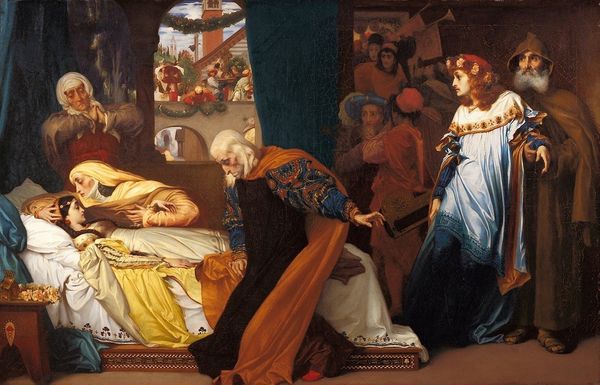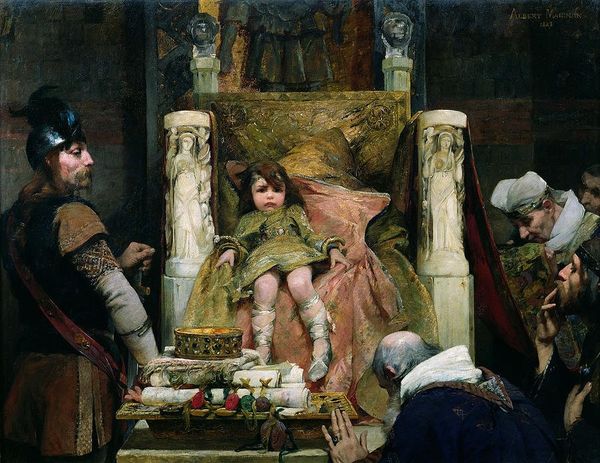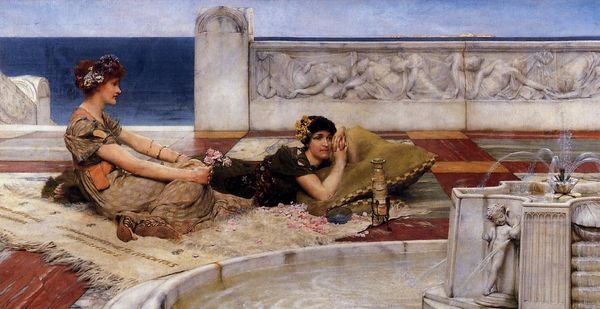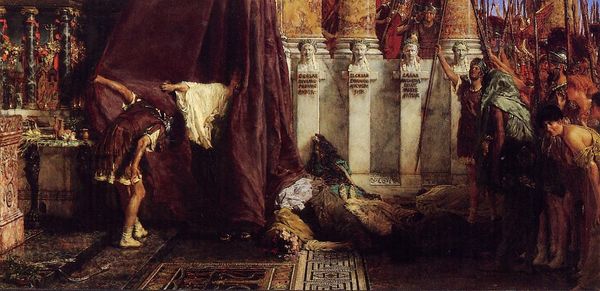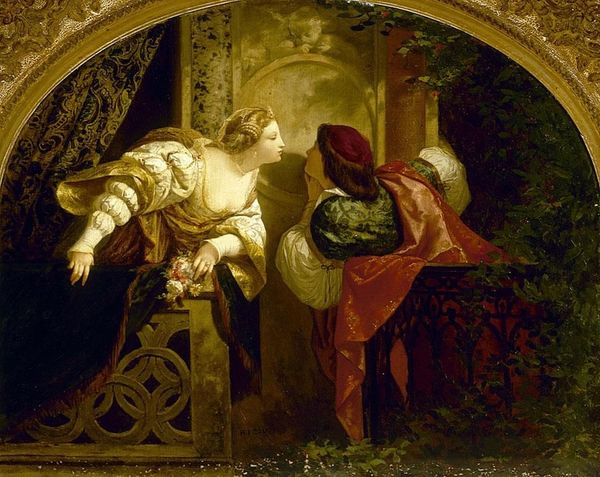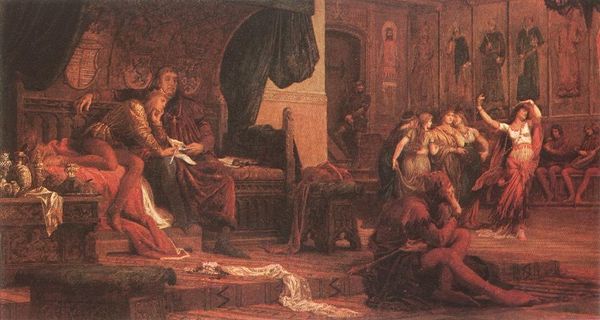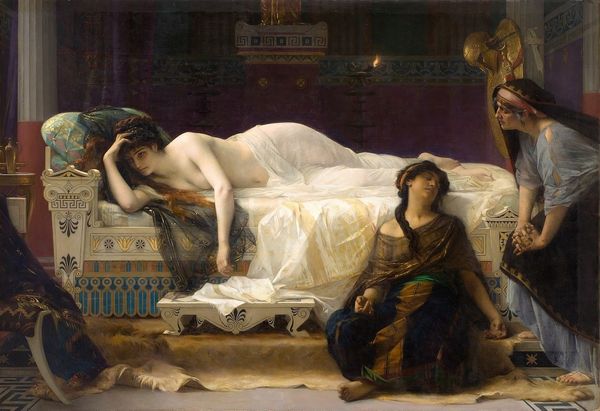
#
cyberpunk
#
street festival
#
cosplay
#
building site documentary shot
#
street art
#
derelict
#
costume
#
urban art
#
mixed media
#
historical building
Copyright: Public domain
Editor: Here we have Lawrence Alma-Tadema’s “A Roman Emperor Claudius,” painted in 1871. The composition is striking, depicting what appears to be a moment of violent upheaval. What stands out to you about this work? Curator: I'm immediately drawn to the conspicuous opulence of the setting clashing with the brutality of the event. Consider the labour involved in producing those elaborate textiles, the marble bust, the meticulously designed mosaic floor - all evidence of extensive resource extraction and a rigid social hierarchy predicated on exploitation. Doesn't the artist seem to fetishize Roman power, subtly obscuring its brutal underpinnings through an obsessive focus on material grandeur? Editor: That’s an interesting perspective. I hadn’t considered how the luxurious materials might actually be complicit in the violence depicted. What about the use of oil paint? How does Alma-Tadema’s technique play into this? Curator: Alma-Tadema’s almost photographic realism, achieved through painstaking layering and glazing of oil paint, reinforces the illusion of objective truth. He’s essentially crafting a highly persuasive visual commodity, packaged for a Victorian audience eager to consume romanticized visions of the past. The labor involved in its creation is significant, hours upon hours dedicated to perfecting its surface, mirroring the hours spent extracting and refining the raw materials for that marble and the pigments used for the dying of those clothes. Editor: So, you see the painting itself as a product reflecting and reinforcing the power structures of both ancient Rome and Victorian society? Curator: Precisely! The artistic labor involved mirrors the very systems of production and consumption it depicts, naturalizing imperial power. And for its Victorian viewers, buying into Alma-Tadema’s version of history means supporting contemporary power relations and social hierarchies. Editor: I never really thought about paintings in this way before. Curator: Hopefully this lens prompts a new evaluation of artistic process as a historical marker.
Comments
No comments
Be the first to comment and join the conversation on the ultimate creative platform.
